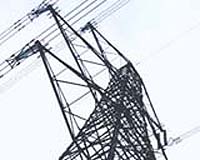 |
Washington DC (SPX) Aug 24, 2009 Chemists are preparing to play an important but often unheralded role in determining the success of one of the largest and most important scientific experiments in history - next year's initial attempts at the National Ignition Facility (NIF) to produce the world's first controlled nuclear fusion reaction. If successful in taming the energy source of the sun, stars, and of the hydrogen bomb, scientists could develop a limitless new source of producing electricity for homes, factories, and businesses. The experiment could also lead to new insights into the origins of the universe. A special two-day symposium addressing this topic, "Nuclear Diagnostics in Fusion Energy Research," will be presented Aug. 19 and 20 during the 238th National Meeting of the American Chemical Society (ACS). Scientists have been trying to achieve controlled nuclear fusion for almost 50 years. In 2010, researchers at the NIF at Lawrence Livermore National Laboratory in California will focus the energy of 192 giant laser beams onto a pea-sized target filled with hydrogen fuel. These lasers represent the world's highest-energy laser system. The scientists hope that their effort will ignite, or fuse, the hydrogen atoms' nuclei to trigger the high energy reaction. "Chemists will definitely play a role in determining whether nuclear fusion reactions have occurred during this NIF experiment, which is key to determining whether the experiment is a success," says Dawn Shaughnessy, Ph.D., a scientist with Lawrence Livermore National Laboratory. "The idea is that the lasers will fuse hydrogen particles together, producing neutrons," says Shaughnessy, one of many scientists who plan to analyze materials produced by the reaction. "We'll collect and measure the materials produced from the ignition and hopefully be able to determine how many neutrons were made. More neutrons mean that more fusion has occurred." NIF Science Director Richard Boyd, Ph.D., says that the NIF facility will offer unprecedented opportunities to advance the field of nuclear chemistry, with a special focus on nuclear reaction studies and the nuclear reactions of astrochemistry, the chemistry of outer space. "A facility like this has never before been available to do experiments in nuclear chemistry," says Boyd, who is also co-chair of the special ACS symposium. "We're going where people have never gone before, and that could lead to some exciting, and possibly unanticipated, discoveries." The NIF building is ten stories tall and has the width of three football fields. The facility, which is 95 percent complete, has taken more than a decade to build at an estimated cost $3.5 billion. Next year, its 192 intense laser beams will deliver to its target more than 60 times the energy of any previous laser system. Scientists in France, the United Kingdom, Japan, and China are also developing laser fusion facilities. The ones in France and China will be similar to NIF, but NIF will begin operating several years before the other two. The facilities in Japan and the U.K. will be less powerful than NIF; they will try to achieve fusion with a somewhat different technique than that used initially at NIF. None of these facilities could produce a dangerous condition, Boyd says. As soon as the target's fuel is expended - in just a few billionths of a second - the reaction stops, he points out. Share This Article With Planet Earth
Related Links American Chemical Society Powering The World in the 21st Century at Energy-Daily.com
 LockMart And Black And Veatch Team To Help Utilities Upgrade Energy Grid
LockMart And Black And Veatch Team To Help Utilities Upgrade Energy GridRockville MD (SPX) Aug 24, 2009 Lockheed Martin and Black and Veatch have announced they have teamed to help utility clients improve the reliability, efficiency and interoperability of the electric power grid and protect it against cyber attacks. Together, the companies offer a comprehensive suite of integrated technology and communication solutions to help utilities shape projects and request grants being offered by the U.S. ... read more |
|
| The content herein, unless otherwise known to be public domain, are Copyright 1995-2009 - SpaceDaily. AFP and UPI Wire Stories are copyright Agence France-Presse and United Press International. ESA Portal Reports are copyright European Space Agency. All NASA sourced material is public domain. Additional copyrights may apply in whole or part to other bona fide parties. Advertising does not imply endorsement,agreement or approval of any opinions, statements or information provided by SpaceDaily on any Web page published or hosted by SpaceDaily. Privacy Statement |